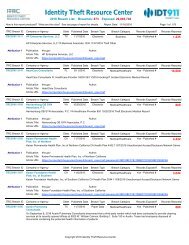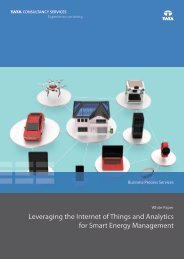You also want an ePaper? Increase the reach of your titles
YUMPU automatically turns print PDFs into web optimized ePapers that Google loves.
Figure 4.6 - Average RWD bytes served per pixel. Source: http://goo.gl/6hOkQp<br />
Image overloading mitigations involve the serving of tailored image sizes and quality,<br />
according to the user device, network conditions and the expected visual quality.<br />
Anti-Patterns<br />
Because <strong>HTTP</strong>/2 will only open a single connection per hostname, some <strong>HTTP</strong>/1.1<br />
best practices are turning into anti-pattern for <strong>HTTP</strong>/2. We list below some popular<br />
methods that no longer apply to <strong>HTTP</strong>/2 enabled websites<br />
Spriting and resource consolidation/inlining<br />
Spriting aims at consolidating many small images into a larger one in order to only<br />
incur one resource request for multiple image elements. For instance, color swatches<br />
or navigation elements (arrows, icons …) get consolidated into one larger image,<br />
called a sprite. In the <strong>HTTP</strong>/2 model, where a given request is no longer blocking and<br />
many requests can be handled in parallel, spriting becomes moot from a performance<br />
standpoint and website administrators no longer need to worry about creating them,<br />
although it is probably not worth the effort to undo them.<br />
In the same vein, small text-like resources like JS and CSS are routinely consolidated<br />
into single larger resources, or embedded into the main html, so as to also reduce the<br />
number of connections client-server. One negative effect is that a small CSS or JS,<br />
which may be cacheable on its own, may become inherently uncacheable if embedded<br />
in an otherwise non-cacheable html, so such practices should be avoided when a site<br />
migrates from <strong>HTTP</strong>/1.1 to <strong>HTTP</strong>/2. However, a study published by khanaca‐<br />
Anti-Patterns | 21





